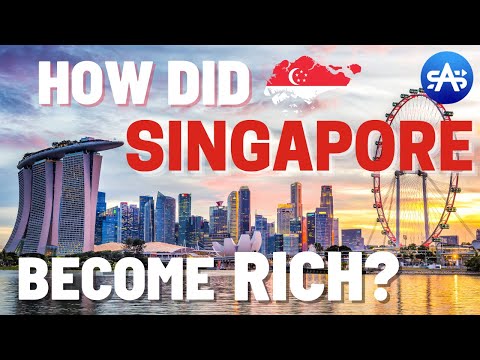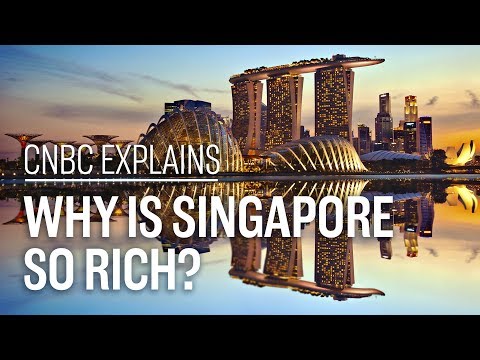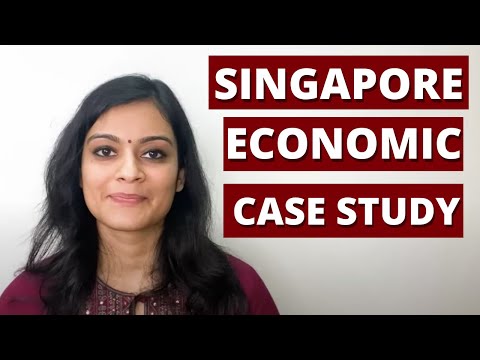How Does Singapore Generate Wealth And Foster Economic Growth?

Wondering how the small city-state of Singapore has rocketed to economic prowess? This dynamic country boasts a robust GDP growth rate of 3.5% in 2018, largely driven by value-added manufacturing and critical sectors like financial services.
In this blog post, we’ll unpack the strategies that fuel Singapore’s wealth generation and foster continuous economic growth. Stay tuned to explore how you too can learn from Singapore’s remarkable success story!
Key Takeaways
- Singapore’s economic growth is driven by sectors such as banking, biotechnology, energy and infrastructure, real estate, and tourism.
- The country’s success can be attributed to strategic planning, focusing on trade expansion, industrialization boom, and recent emphasis on innovation and technological advancements.
- The government of Singapore plays a crucial role in fostering economic growth through state enterprise and investment. They invest in various sectors and actively promote foreign direct investments.
- Singapore actively pursues international trade agreements to drive its economic growth. It has established free trade agreements with several countries around the world.
- Singapore’s highly skilled workforce contributes significantly to its economic growth. The government places great importance on education system development to meet changing needs.
Overview of the Economy of Singapore

The economy of Singapore is driven by sectors such as banking, biotechnology, energy and infrastructure, real estate, and tourism.
Economic statistics

Singapore has big money. It earns US$54,530 per person each year. In 2016, the country grew by 1.7%. Goods made in factories also went up by 1% that same year.
The growth of Singapore comes from smart plans put in place. The goal is always to make more and more GDP. This shows how well the whole country is doing with making goods and services which a lot of people buy.
History

Singapore did not have much wealth in the past. After World War II, it was a small fishing village with no resources. But things started to change fast.
In 1965, Singapore became its own country. At this time, they created plans for economic growth and success. This plan helped Singapore become a prosperous society and an international city by 2010.
The changes were many but focused on trade, industry and finance. The goal was quick development that lasted long into the future. Now researchers around the world study how Singapore’s rapid development happened so well and so fast.
Sectors (banking, biotechnology, energy and infrastructure, real estate, tourism)
-130267970.jpg) Banking is a big deal in Singapore. It makes a lot of money for the country. Many large banks from around the world have offices here.
Banking is a big deal in Singapore. It makes a lot of money for the country. Many large banks from around the world have offices here.
Biotechnology is also growing in Singapore. The country uses science to make new products and medicines. This helps to keep people healthy and creates jobs.
Energy and infrastructure are important too. Singapore is working hard to build new roads, bridges, and buildings. They want their country to be modern and easy to get around.
Real estate is another way that Singapore makes money. People buy lots of homes and buildings here because they believe it’s a good investment.
Tourism brings many people to visit Singapore each year. These visitors spend money which boosts the economy.
Development of Singapore’s Economy

Singapore’s economy has experienced significant growth and transformation since its independence, with several key periods shaping its development.
British colonization

During the British colonization of Singapore, the economy went through significant changes that laid the foundation for its future growth. As a former colony of the British Empire, Singapore benefited from their influence and infrastructure development.
The British established trade networks and developed port facilities, transforming Singapore into a crucial hub for global trade. This strategic location allowed Singapore to attract foreign investments and foster economic prosperity.
Under British rule, Singapore experienced rapid urbanization and industrialization. The establishment of industries such as manufacturing, shipping, and banking led to economic expansion and job opportunities.
The British also invested in improving education and healthcare systems in Singapore, which contributed to human capital development.
Post-independence trade expansion
After gaining independence, Singapore experienced significant trade expansion, which played a crucial role in its economic growth. The city-state rapidly transformed from a low-income country to a high-income country within just a few decades.
This expansion was driven by foreign direct investments, especially in the early years after independence.
One of the key factors contributing to Singapore’s industrialization and export growth was its openness to the international economy. The government actively encouraged the import of goods and fostered an environment that attracted foreign investors.
As a result, the trade volume grew more than sixfold between certain periods, fueling Singapore’s economic development.
Singapore’s success in post-independence trade expansion can be attributed to its strategic location as a global trading hub and its strong emphasis on creating an investor-friendly business environment.
These efforts have led to increased exports and imports, contributing significantly to the city-state’s overall economic growth.
Industrialization boom and change

Singapore experienced a significant industrialization boom and underwent transformative changes in its economy. The manufacturing sector played a crucial role in this growth. From 1965 to 1975, the share of manufacturing in Singapore’s GDP increased from 14% to 22%.
This expansion was driven by attracting foreign direct investment and prioritizing technological advancements and innovation. The country focused on developing key industries such as electronics, chemicals, and precision engineering.
These efforts resulted in the establishment of numerous multinational corporations setting up production facilities in Singapore.
Simultaneously, there was a shift towards services as well. This change reflected the rapid industrialization and development taking place in Singapore. The government recognized that diversifying into sectors like banking, tourism, real estate, energy and infrastructure would help sustain economic growth.
As a result, they implemented policies aimed at attracting international companies to establish their operations within these sectors.
Recent history
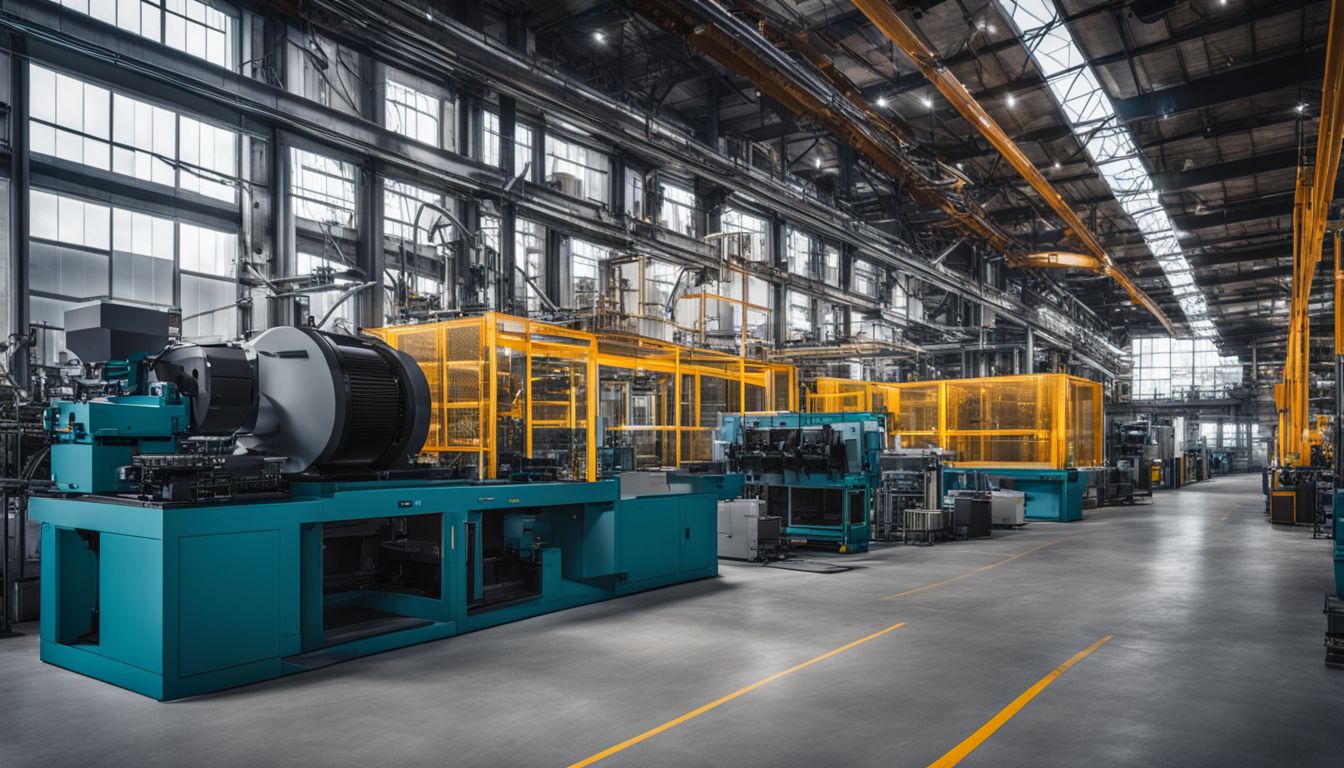
In recent years, Singapore has continued to witness significant economic growth and development. With a focus on innovation and technological advancements, the country has been able to maintain its position as a global economic hub.
In 2018, the overall growth of the Singapore economy was recorded at 3.2%. This growth can be attributed to several factors including increased foreign investments, expansion in the financial sector, and urban development projects.
One key aspect of Singapore’s recent history is its emphasis on industrialization and modernization. The government has actively promoted the manufacturing sector by attracting multinational corporations and implementing policies that support research and development activities.
This has led to advancements in various industries such as biotechnology, energy, infrastructure, real estate, and tourism.
Moreover, Singapore has also made great strides in strengthening its financial services sector. The country is home to numerous international banks and financial institutions due to its favorable regulatory environment.
Additionally, it has established itself as a fintech hub by encouraging startups in areas like digital payments and blockchain technology.
Role of State Enterprise and Investment

The government of Singapore plays a crucial role in fostering economic growth through state enterprise and investment. They invest in various sectors to drive the economy forward. The government promotes outward investment through Enterprise Singapore, which helps local companies expand overseas by providing market opportunities and support.
They also encourage higher productivity and research and development by offering investment credits and allowances.
Singapore’s diplomats abroad play an important economic role as well. They work to foster foreign investment into Singapore and ensure market access for local businesses. The government also actively promotes foreign direct investments, which have been a major driver of the country’s economic growth.
Overall, the government of Singapore recognizes the importance of state enterprise and investment in driving economic growth. They provide support to local companies expanding internationally, promote research and development, attract foreign investments, and ensure market access for their businesses.
This proactive approach has played a significant role in Singapore’s success as a thriving economy.
Trade, Investment, and Foreign Aid
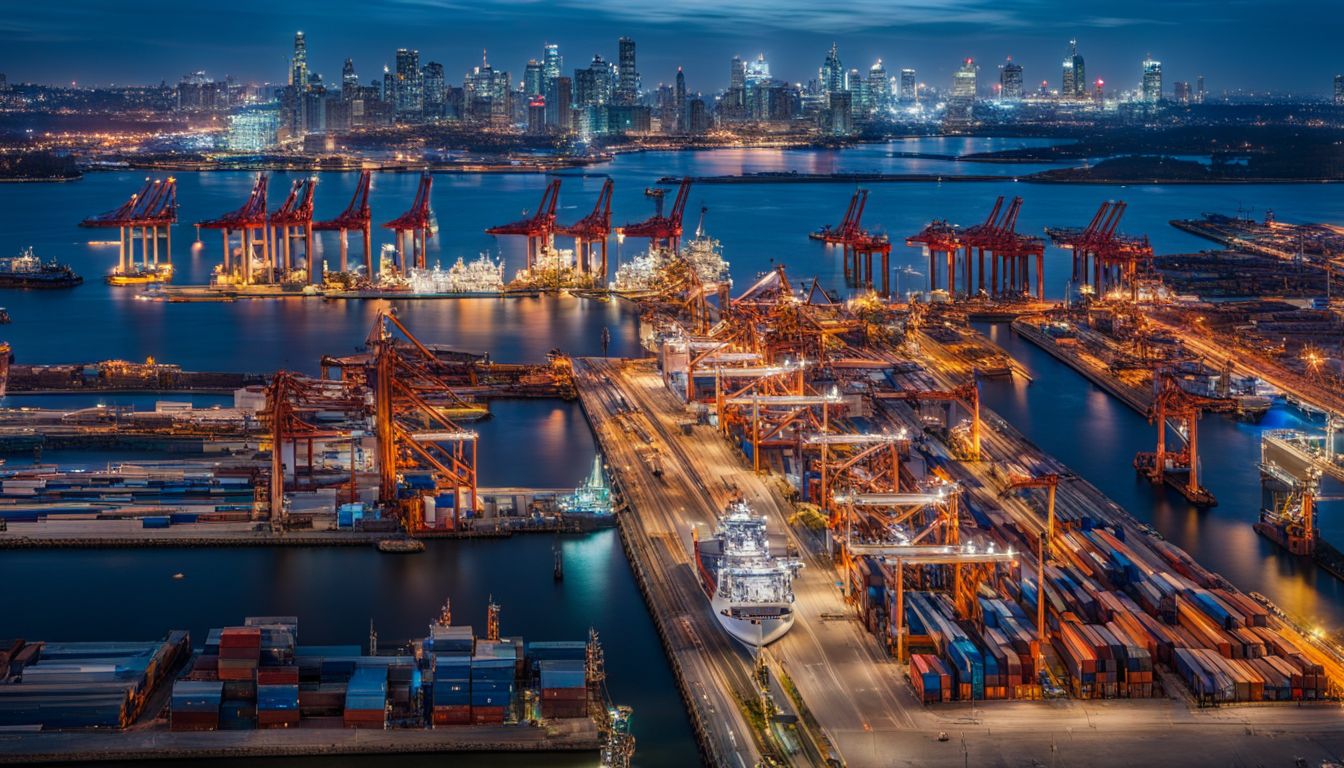
Singapore has actively pursued international trade agreements and investments to drive its economic growth and foster wealth generation.
International trade agreements

Singapore has established free trade or economic cooperation agreements with various countries, including ASEAN, Australia, Canada, Chile, Mexico, China, and more. These international trade agreements have played a significant role in Singapore’s economic growth and development.
By integrating into the world economy through trade, Singapore has been able to benefit from enhanced trade and investment opportunities. This has contributed to poverty reduction and overall economic progress.
The benefits of these trade agreements extend beyond just Singapore. Less-developed economies can also experience economic growth through increased access to global markets and investment opportunities provided by such agreements.
Singapore’s extensive network of trade agreements allows the country to take advantage of global value chains and drive its own economic growth while contributing to global prosperity.
It is important to note that Singapore’s reach goes beyond the Asia-Pacific region when it comes to trade agreements. The country has also signed agreements with countries like Canada and Mexico, further expanding its trading partnerships on a global scale.
Singapore Workforce

Singapore’s workforce plays a crucial role in the country’s economic growth, thanks to its highly skilled and educated population.
Education system

Singapore’s education system is highly centralized, with the Ministry of Education overseeing education from kindergarten to higher education and lifelong learning. The government has implemented a three-phase approach to educational development, categorized as ‘survival-driven’, ‘efficiency-driven’, and ‘ability-driven’.
This means that the focus of education in Singapore has evolved over time to meet the changing needs and demands of the economy. To ensure high-quality teaching, Singapore has developed a comprehensive system for selecting, training, compensating, and developing teachers and principals.
These efforts have contributed to the success of Singapore’s education system, which is closely linked to its economic prosperity. Reforms and improvements continue to be made to adapt to future challenges.
In summary, Singapore’s education system plays a crucial role in supporting its economic growth. With strong centralization under the Ministry of Education, it has undergone significant changes over time.
Savings culture
Singapore has a strong savings culture, which plays a crucial role in generating wealth and fostering economic growth. The people of Singapore have a mindset focused on financial prudence, thriftiness, and frugality.
They believe in accumulating wealth for the long term and practice personal finance management effectively. This culture of saving allows individuals to invest their money wisely and maintain financial stability.
One important factor contributing to this savings culture is the education system in Singapore. From a young age, children are taught about the importance of saving money and managing finances responsibly.
This instills an investment mindset early on, ensuring that individuals grow up with the knowledge and skills needed to make wise financial decisions.
Another key aspect of Singapore’s savings culture is its low tax rates. With lower taxes, people have more disposable income that they can save or invest for their future. Additionally, the government encourages savings by providing various incentives such as tax reliefs for retirement planning and home ownership.
Fighting corruption
Singapore takes a strong stance against corruption, which has contributed to its economic success. The country actively enforces robust anti-corruption laws and is known for maintaining a clean and transparent business environment.
It consistently ranks as the least corrupt country in Asia and receives recognition from Transparency International for its efforts in combating corruption.
Singapore’s government emphasizes good governance, ethical practices, and accountability. It has implemented various measures to promote integrity and fairness, such as establishing a strong institutional framework with clear rules and regulations.
Antibribery laws are strictly enforced, ensuring that individuals involved in corrupt activities face severe consequences.
The effective enforcement of anti-corruption laws contributes to Singapore’s reputation as a reliable place to do business. This helps attract foreign investment and multinational companies who value transparency and ethical conduct.
Low tax rates
Singapore is known for its low tax rates, which play a significant role in the country’s economic growth and wealth generation. The government offers various tax breaks, exemptions, incentives, and benefits to both corporations and individuals.
This includes deductions, privileges, relief, advantages, reductions, and savings on taxes. Singapore does not levy taxes on capital gains either. These low tax rates have made Singapore an attractive destination for businesses and individuals looking to invest or start a company.
They contribute to Singapore’s reputation as a tax haven and encourage foreign investment and entrepreneurship. By reducing corporate taxes even further recently the government aims to stimulate economic growth by attracting more businesses and encouraging innovation.
Economic Challenges Singapore Faces

Singapore faces economic challenges such as managing inflation and addressing the complexities of the property market. Read on to learn more about the unique strategies used by Singapore to overcome these challenges and maintain its economic growth.
Inflation
Inflation is an economic challenge that Singapore faces. It means the prices of goods and services are going up over time. In August, there was overall input price inflation in Singapore, which led to higher purchasing costs and wages.
This can make it more expensive for people to buy things they need and can also affect their wages.
Global growth is also slowing down because of elevated inflation, higher interest rates, reduced investment, and geopolitical events like Russia’s invasion. These factors have a big impact on economies around the world.
When inflation is high, it can erode people’s purchasing power and create uncertainty in the economy.
Understanding the effects of inflation is important for managing economic challenges and fostering growth. High inflation rates can be a hindrance to economic growth because they make things more expensive for people.
Property market
The property market in Singapore is a significant economic challenge that the country faces. With limited land availability and high demand for housing, the property market has experienced rapid growth over the years.
The government has implemented a diversity policy for housing, ensuring that different segments of society have access to affordable and quality homes. This approach has contributed to Singapore’s economic success by providing stability in the property market and promoting social cohesion.
The property market in Singapore is deeply connected to the world market. As an international financial hub, Singapore attracts foreign investors who view properties as valuable assets.
Property prices are highly dependent on global economic conditions and investor sentiment, making it vital for Singapore to maintain a pro-business environment that welcomes foreign investment.
Government policies play a crucial role in managing the property market growth, aiming to ensure sustainable development while addressing challenges such as affordability and speculation.
Success Story of Singapore’s Economic Growth

Singapore’s economic growth can be attributed to the government’s strategic policies and long-term investments, making it a prime example for other countries seeking prosperity through economic development.
Strategies used by the government
The government of Singapore has implemented various strategies to drive economic growth and generate wealth. One key strategy is government intervention, where the state plays an active role in addressing economic challenges and promoting development.
This includes implementing economic policies that support businesses, investing in strategic initiatives, and managing finances effectively.
Another important strategy used by the Singaporean government is fostering strong foreign relations to attract investments and promote trade. Singapore has signed international trade agreements with many countries, creating favorable conditions for businesses to thrive.
The government also provides foreign aid to developing nations, which helps build diplomatic ties and opens up new markets for Singaporean companies.
Additionally, the government of Singapore focuses on inclusive growth by implementing policies that benefit all segments of society. These policies include education reforms to develop a highly skilled workforce, promoting a savings culture among citizens to encourage long-term financial stability, and taking strong measures against corruption to ensure transparency and accountability.
Lessons for other countries
Singapore’s economic success holds valuable lessons for other countries looking to foster growth and generate wealth. One important lesson is the willingness to embrace international trade and imports.
By being open to global markets, countries can benefit from increased investment, access to new technologies, and a broader customer base. Singapore’s success also highlights the significance of political stability in driving economic growth.
A stable government provides a conducive environment for businesses to thrive and attract foreign investors.
Another lesson is the power of social diversity in stimulating economic development. Singapore’s multicultural society has allowed it to tap into a wide range of talents and perspectives, fueling innovation and creativity.
Additionally, adopting a free-market economy plays a crucial role in facilitating business growth by promoting competition, efficiency, and entrepreneurship. Countries can learn from Singapore’s example by implementing transparent policies that encourage market-driven initiatives.
Comparison with Other Successful Economies

Singapore has often been compared to other successful economies such as South Korea, Japan, and Ireland – find out how it measures up!
South Korea
South Korea is one of the successful economies to compare with Singapore. It ranks twelfth in terms of GDP and has experienced rapid economic growth, similar to Hong Kong SAR and Singapore.
One key factor in South Korea’s success is its strong business environment, which fosters growth in the domestic market and attracts foreign investors. The country has also made significant progress in reducing poverty while achieving economic growth.
To further support its social development, South Korea has implemented action plans in areas such as employment, income distribution, and poverty reduction.
In comparison to other countries like Japan, Ireland, and Singapore itself, South Korea stands out for its impressive economic achievements. Its focus on creating a favorable business environment has led to sustained growth and attracted both local and foreign investments.
Additionally, South Korea’s proactive approach towards addressing social issues demonstrates its commitment to inclusive development. Through targeted strategies related to employment generation, fair income distribution, and poverty reduction efforts have been made to ensure that the benefits of economic growth are shared by all segments of society.
Japan
Japan is another successful economy that we can compare to Singapore. Japan has seen strong economic growth and achieved growth rates similar to its “economic miracle” period. This success has led to ongoing debates about the factors driving its economic growth.
Japan’s rapid economic expansion can be attributed to a combination of factors including government-led industrial policies, technological innovation, a highly skilled workforce, and strong export performance in sectors like automotive manufacturing and electronics.
Additionally, Japan’s commitment to research and development (R&D) investment has played a crucial role in sustaining its economic development over the years. As a result, Japan serves as an important example for other countries looking to achieve high growth rates and sustained economic development.
– South Korea
South Korea is yet another country that shares similarities with Singapore in terms of achieving remarkable economic growth. Like Singapore, South Korea experienced rapid industrialization within a short period.
Ireland
During the years between 1995 and 2007, Ireland experienced a period of rapid economic growth which earned it the nickname “Celtic Tiger.” The Irish economy grew at an average rate that was comparable to the growth seen in East Asian nations like the ‘Four Asian Tigers.’ This success can be attributed to factors commonly associated with market economies, such as strong property rights and a robust free market.
These same factors have also played a role in driving Singapore’s economic growth. It is worth noting that Ireland’s ability to match the growth rates of East Asian nations during this time is considered quite rare for a Western country.
Conclusion

In conclusion, Singapore generates wealth and fosters economic growth through various strategies. It focuses on sectors like manufacturing, finance, tourism, and trade. The government plays a crucial role by implementing sound macroeconomic policies and investing in human capital development to ensure sustainable prosperity for the country.
FAQs
1. How does Singapore generate wealth?
Singapore generates wealth through various industries such as finance, manufacturing, tourism, and technology. The country has a strong business environment and attracts foreign investments.
2. What factors contribute to Singapore’s economic growth?
Several factors contribute to Singapore’s economic growth, including strategic location, political stability, highly skilled workforce, efficient infrastructure, and government policies that support trade and investment.
3. How does Singapore foster economic growth?
Singapore fosters economic growth by promoting innovation and entrepreneurship, investing in research and development, providing infrastructure for businesses to thrive, maintaining sound fiscal policies, attracting global talent with competitive wages and incentives.
4. What role does the government play in Singapore’s economic growth?
The government of Singapore plays a crucial role in its economic growth by formulating pro-business policies, investing in education and skills training programs for the workforce,
and establishing institutions that promote technological advancements and attract foreign investments.
5. How does tourism contribute to Singapore’s economy?
Tourism contributes significantly to Singapore’s economy by attracting visitors from around the world who spend money on accommodation,
shopping at local businesses,
dining at restaurants,
and visiting tourist attractions.
This creates jobs
and boosts revenue for the country.
